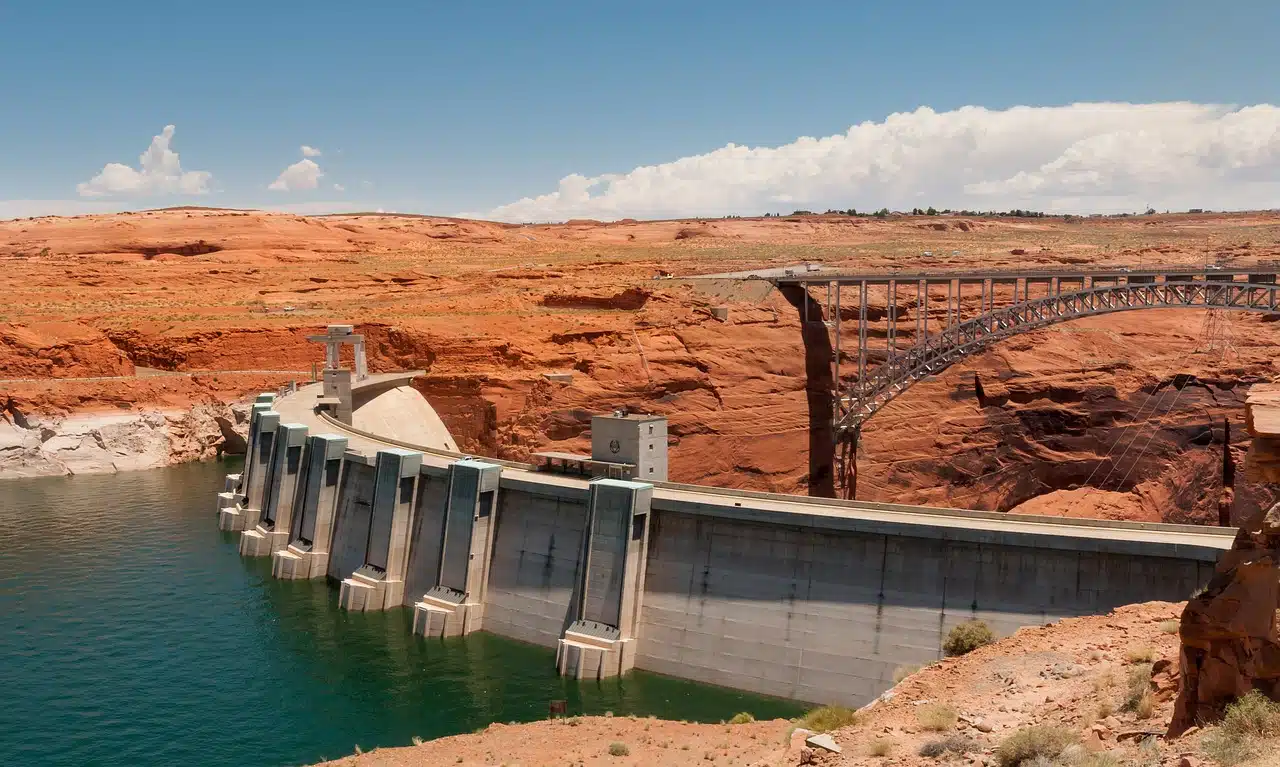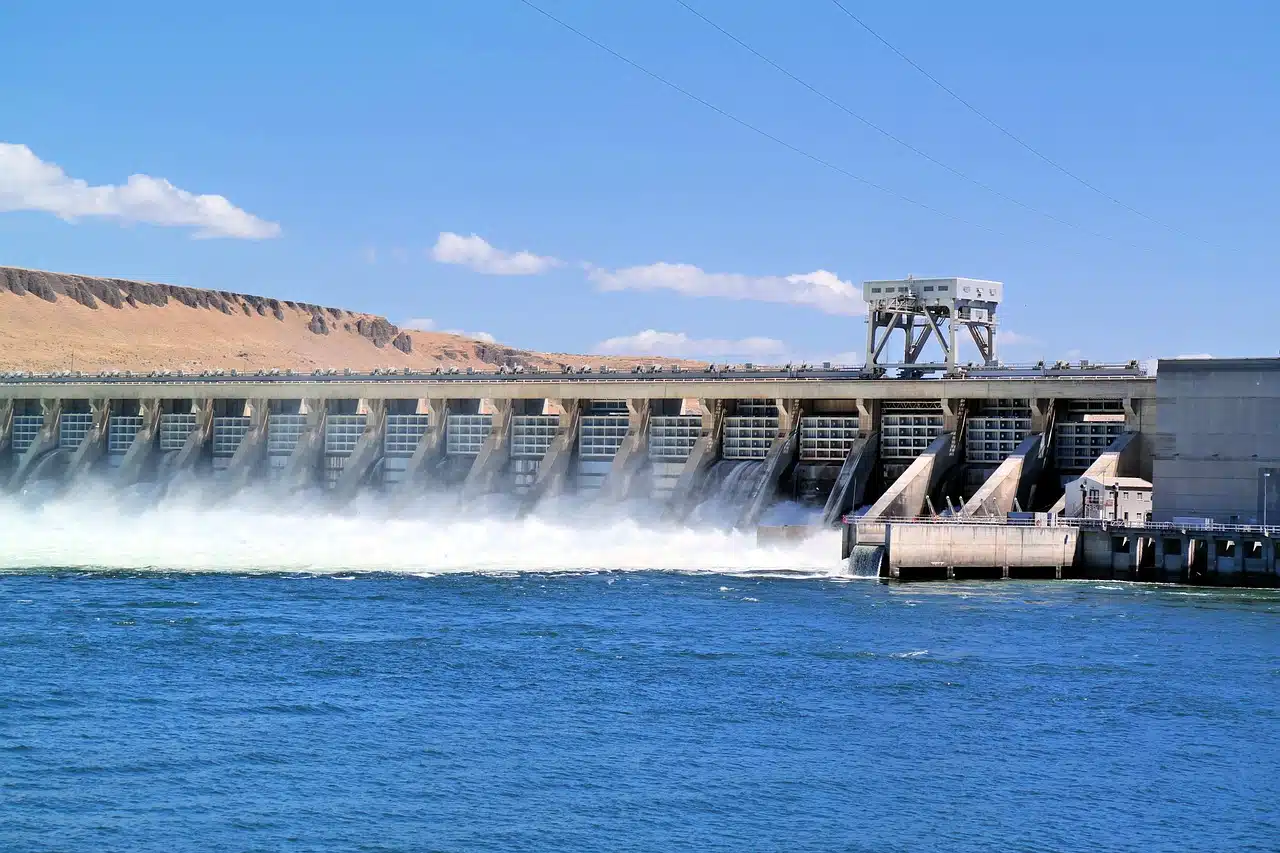
A dam makes it possible to contain or regulate a watercourse.
A dam is a work carried out to contain or regulate the flow of water . The concept, from the Latin repressus , is used to name the place where the waters are stopped, whether artificially or naturally.
The dam or dam consists of a barrier of concrete, stone or other material, which is built over a river, stream or canal to impound the water in its channel. This impounded water can then be diverted to irrigation pipelines or used for the production of mechanical or electrical energy .
Parts and classifications of dams
In a dam it is possible to distinguish between the reservoir (the volume of water retained), the slopes (which limit the body of the dam), the gates (the mechanical devices that allow regulating the flow of water), the spillway (where the surplus water when the dam is full) and the locks (which facilitate navigation through the dam), among other elements.
Dams can be divided into gravity dams (their own weight is responsible for resisting the push of the water), breakwater dams (triangle-shaped), inflatable dams and other types.

Dams are often used to generate electrical energy.
Construction throughout history
There is a historical debate about the construction of dams. On the one hand, those in favor affirm that man must control water to increase his well-being. Those who are against, on the other hand, maintain that the dams are dangerous (their eventual failure can cause the death of hundreds of people) and imply major social changes (such as displacement of populations or the loss of archaeological sites) that are not justified.
The mechanical energy of dams can be used directly, as the old water mills did, or indirectly, to generate electrical energy, as occurs in hydroelectric plants.
The most important dams in the world
Let's see below some of the most important dams in the world:
La Serena Reservoir
It is located in Spain, precisely on the Zújar river in the province of Badajoz. It was inaugurated by Don Juan Carlos I and Doña Sofía on February 2, 1990 and it is the second largest pocket of water in the entire peninsula, only surpassed in size by the Portuguese Alqueva reservoir. Its storage capacity is around 3.2 billion liters of water.
Alqueva Dam
With an area of 250 square kilometers, this marvel of Portuguese engineering can store up to 4,150 cubic hectometers of water, which could supply the needs of all the inhabitants of Lisbon for four decades.
Tehri Dam
It is a dam with many purposes built in India, on the Bhagirathi River and was the most important of the company Tehri Hydro Development Corporation Ltd.. Among its capacities, is the generation of 2400 megawatts, the stabilization of irrigation at a area of 6,000 square kilometers and the supply of drinking water to the urban areas of Delhi, Uttarakhand and Uttar Pradesh, in quantities of around 270 million gallons.
Chicoasen Dam
Also known as Manuel Moreno Torres, it is a dam located in Chiapas, Mexico, and is part of a huge hydroelectric plant that uses the power of water to generate electrical energy. The height of its curtain is 262 meters, which makes it an imposing structure in the middle of a beautiful natural landscape.
Inguri Dam
It took almost two decades to complete the construction of this dam in Georgia. It is the largest structure in the entire Caucasus region: its height is around 270 meters and its extension is around 750 meters. Regarding its capacity, this dam can store around 1.1 million cubic meters.
